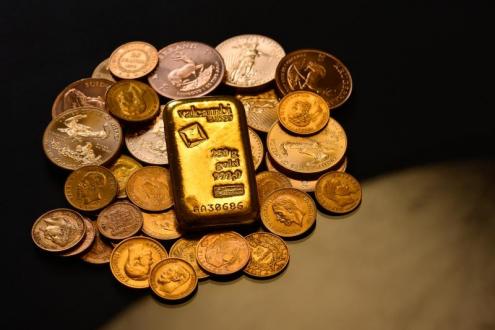How Asia’s Wealth Management Community is Positioning for the Potential Arrival of Inflation

Joshua Rotbart of J. Rotbart & Co.
Jul 14, 2021
On June 9, Hubbis assembled a select group of high-level executives from the Asian and European wealth management community, representing family offices, fund managers, private banks, IAMs, and specialist financial advisors to discuss the potential for inflation rearing its head again and how wealthy Asian investors should position themselves in anticipation. The discussion was conducted on an off the record basis, aside from a short presentation made at the start by Joshua Rotbart, Founder of J. Rotbart & Co. We have summarised the key elements of the event and the key observations in this report.
Co-Hosts: Hubbis and J. Rotbart & Co.
Some of the topics discussed included:
- What does the prospect of higher inflation in the US and globally mean for you and your clients?
- Do you think higher inflation will indeed become an issue?
- How will you adapt client portfolios as a result?
- Is the US dollar likely to weaken?
- What will happen to interest rates, especially US dollar rates?
- What do you see is the role of gold in HNW and UHNW client portfolios at this point in time?
- Are cryptocurrencies a potential hedge against inflation and weakness in the US dollar?
- Is there any relationship between the price of gold and cryptos such as Bitcoin?
- Is there a case for both gold and cryptocurrencies in HNW and UHNW wealth portfolios?
Simon Lints, formerly in a prominent leadership role with Schroders Private Bank in Asia and now an independent consultant, opened the proceedings as moderator for the event. He introduced the event sponsor and co-host, J. Rotbart & Co., and the firm’s Founder and MD, Joshua Rotbart, as well as his colleague Zvika Rotbart, Business Development Executive at the firm. Rotbart then opened the event with a short presentation updating attendees on the gold market, specifically linking it as an investment to the potential environment ahead, which many believe might herald the ominous return of inflation. (View that presentation HERE).
The Compelling Case for Gold for Asia’s HNW and UHNW Community - A Short Presentation from Joshua
“Why gold?”, Joshua Rotbart pondered to begin the short presentation, and then answered this question with the help of some excellent slides and data that can be summarised in the following key points:
- There is more and more evidence that inflation is rising in the US and in the Eurozone;
- Gold has historical and cultural value as the ‘money’ and medium of exchange before the world invented ‘fiat’ money;
- There is global and stable demand for gold, but limited supply and it is increasingly expensive to find and to mine out of the ground;
- Physical gold can be bought and sold in high volumes; there is plenty of liquidity and globally a well-regulated and professional trading and settlement ecosystem;
- Gold provides portfolios with inverse correlation to the mainstream assets and mainstream financial markets and is, therefore, a tool for hedging and for portfolio diversification;
- Gold is a core asset held by central banks across the globe;
- Gold is both a store of value and an asset that has performed well historically;
- Although there is no direct correlation between the CPI data and gold prices historically, gold has proven to be a natural hedge against the uncertainty brought on by rising inflation and US dollar weakness – worries and uncertainties have historically been good for gold; and
- From the purchasing power perspective, gold has consistently performed remarkably well since the 1970s, when its price really began to ratchet up rapidly.
The Main Event
Rising inflation numbers, rising and pent-up demand, and the ‘greening’ of the global economy
The CEO and CIO of a discretionary portfolio management and advisory business in Singapore then opened the main discussion by reporting that he did not fear inflation until the pandemic hit, saying demand had been radically curtailed for some time at the same time as supply in the economies had been eroded, so the compression of demand in a shorter timeframe combined with reduced supply and the global central bank and government liquidity and financial support programmes have potentially changed the game significantly.
At the same time, he observed that the ‘greening’ of the world is driving demand for materials rapidly higher, as demand for cobalt, copper and core elements surges to cope with the growth of green energy and green transportation. Moreover, the rising minimum wage in the US is creating rising demand at the same time as savings are so high as people have spent far less on holidays and other luxuries through the pandemic.
Accordingly, he fears inflation will be worrisome in the next two to three years, and not just as people thought, the coming two to three quarters. “We could see a number such as 5% printed soon in the US,” he warned. And he warned that this could threaten many of the analysts' predictions for the markets.
Positioning portfolios accordingly, he reported he is a believer in gold in the face of inflation. He also likes REITs, noting that despite rising inflation numbers, he is not worried about any major increase in long-term interest rates. The technology sector can cope, he reported, as the sector broadly has pricing power; indeed some of the Big Techs are akin to monopolies in their ability to drive price rises unimpeded.
But others argue while headline inflation is rising and will settle higher than in recent times, there is little to fear, as excess liquidity resides in the world of assets, not CPI
Another expert said he thinks any headline numbers in the short term are likely to be short-lived, and his view is that inflation will settle at a higher level than it was in the last 20-30 years, but that this will not result in runaway inflation. That is because excess liquidity is going into rising asset prices, where there is a shortage of supply and not as much towards ‘things’ we buy, in other words, constituents of the CPI. Only if governments were to redirect liquidity to these ‘things’ we buy or if they were to truly incentivise and drive consumer spending would that result in a significantly tougher inflation environment.
Rising interest rates and stagflation are more likely than a serious return of inflation
Picking up on this last comment, a fund manager from Europe reported that inflation is hardly a topic of discussion at all with his clients, even today, but that his and their bigger worry is the likely rise in US interest rates in the next 12-to-24-month time frame. His historical perspective is that inflation disappeared when the Iron Curtain came down in Europe in 1991, signifying the end of the Cold War, at that time adding another roughly 1 billion workers in the Northern Hemisphere into the global economy. He agreed that stagflation is the bigger worry, not inflation, which is especially worrisome in an environment where governments are swamped in debt and where nations cannot survive higher interest rates. In this scenario, he said gold and other metals certainly have a role to play in well-assembled portfolios.
For many, the US inflation ‘party’ seems more likely to be a short-term phenomenon
A guest observed that a core factor in higher headline inflation numbers in the US, for example, comes from airfares, as people begin travelling again, but as planes and routes only gradually come back into operation. “The reality is that everybody wants to fly somewhere there because now they can.” And he commented that as people have spent so much more time at home, they have wanted to extend or upgrade their homes, driving lumber and other prices upward. And he explained that there has been a shortage of new cars as chip production had dropped since the pandemic hit, so everyone, even the rental firms, buys used, so again prices have risen there. “But all this does not mean a permanent explosion in demand,” he said. “As one of my colleagues likes to say, people are going to party for the next six months, not for the next six years.”
When the party stops, the real fun begins, but stick to shorter duration exposures
Indeed, this expert said the headline inflation numbers would drop later in the year, and then that means that the real fun begins. “With rates so low, with another infrastructure package, we might be worried about inflation in 2023 and beyond, but there's no point trading that right now. If we are really in for a sustained period of 4% plus inflation, which feeds on itself, yes, we should really worry about that, but it's not something we position for now. In reality, rates can go up a lot more than they can go down, and our only positioning in relation to possible inflation is to be as short duration in the portfolio as possible. We used to be underweight financials, we're not anymore. We used to have very little commodity exposure, but we now have commodity exposure, and we have gold as well, in the 3% to 8% range.”
With inflation set to be marginally higher, albeit not worryingly so, there might be some associated positives, such as a more normalised yield curve
“We also believe that inflation is going to be short term, and we don't see a lot of long-term inflation,” said an asset manager representing wealth portfolios of some 70 clients. “For the next five years, we think that annualised inflation rates of about 2.5% will actually be actually positive because to us, negative interest rates are the real anomaly to be wary of. I dislike negative interest rates. I dislike corporations and governments having the ability to borrow money and get rewarded for that. I think this is complete nonsense. It's time for markets to normalise.”
Disinflation/deflation is more likely than inflation due to the ongoing impact of technology, and advisable to veer towards non-correlated strategies due to impending corrections
This same expert said that technology, AI, robotics and other innovations are more likely to continue to result in disinflation than inflation. “If you add to that high unemployment in Europe, and factor in China slowing down, we see few reasons to fear inflation shooting up for too long,” he asserted. In terms of gold in the portfolios given this outlook, he said that an allocation from 0% to 5% is ideal for clients, depending on their risk profiles. “We have a large skew towards non-correlated strategies,” he said, “and we believe that fixed income and equities, long-only I mean, are ripe for another correction, as the correlation between both asset classes is very high, currently about 0.6 at 60 days, where it should normally be around negative 0.3 roughly. So, if you're holding the 60-40 kind of traditional approach, you are bound to have a lot of volatility and potential drawdowns. Accordingly, we have reduced the beta for portfolios, expecting some kind of a correction, which we would like to see.”
A nuanced perspective on the spectre of inflation, with inflation and deflation across different segments of the economy at the same time
Another attendee explained that in a complex world, there could at the same time be many areas of the economy that are suffering rising inflation, whilst others are trending deflationary, and this can be mirrored across different countries and regions, as well as across different economic sectors and sub-sectors. He explained that as an expert in the commodity space for over 20 years, he has observed a notable trend of new supply chain structures that are becoming more regionalised, especially since the pandemic hit and as a means to mitigate the associated logistics chaos. He also highlighted a far greater focus on principles of sustainability and ESG compliance, and this is also resulting in differences in the pricing of commodities and materials within different regions.
He reported that there are also many dislocations, for example, in Singapore, imported higher-end European furniture that used to be deliverable within a couple of weeks and at a 20% discount might now be taking three months and could be priced at a 30% premium. “Along with higher taxes that will end up being passed on to the end consumers, there is plenty of inflation in the system now, just as there is deflation in other areas,” he said. “People should really think carefully about what all this means for their businesses, where the margins are, and how they can make money. It is all much, much more complicated than just looking at raw inflation statistics.”
Looking further afield from the US and Europe, China’s inflation numbers look fairly benign for the foreseeable future
Another perspective came from a China watcher, who reported that there is not much pressure on or retail or governmental appetite for higher prices in China’s huge economy, and therefore the outlook for interest rates and inflation is reasonably benign there.
If there is indeed some consensus on modestly higher headline inflation around 2.5% but not substantial fears for overruns, then what does that mean for yields?
A guest said if there was some general view amongst attendees that 2.5%, as there appeared to be, it does not seem to square up with a 10-year yield of around 1.5%. “If we are going back to normal on inflation, and by normal, I'm saying back to the kind of 2%+ number that most central banks had for years been trying to achieve, then we have to have monetary policy that's going to have to back off, give us a steeper yield curve, and the governments are going to have to swallow the consequences of that,” he asserted.
Could the US dollar suffer as a consequence? Quite possibly and potentially heavily, but perhaps not yet…
This same expert said the US dollar should theoretically also face issues ahead given the massive and swelling mountain of debt, especially as the overall duration of debt in the US is much shorter at around five years than, for example, the UK average of roughly 13 years. “It is asking for trouble, and that trouble is when the currency potentially collapses,” he warned. “I think there is something big out there at some stage, but over the next 12 months, I think we should worry about some of the biases, creeping inflation that could push the number up from 2%, and even if we all just agree that the number at the end of the year is actually 2%, then central banks will have to react.”
A threatened US dollar and therefore an impaired global financial system could spell signal upside for cryptocurrencies. He said that as more people think the US dollar could be in trouble, the more interest in and possibly need for cryptos. “Everyone keeps saying the US dollar is omnipotent, and well yes, it is for now, but anything that comes and grabs a significant market share of what we do on a daily basis in our lives, call that cryptocurrency, will become more and more credible as an alternative currency.”
“We have almost been forced to include cryptos as part of some portfolios,” he added, “as everyone seems to have wanted to pile in, but we have not done so in a structured way, and perhaps we are right now on the cusp of needing a proper solution and a more patient, measured approach.”
Cryptocurrencies –more of a gamble for now but potentially a more significant role in a well-structured portfolio approach lies ahead
The representative of a firm that does actually run a cryptocurrency trading service reported that gains had been remarkable in the past two years, but that investment was conducted more on the basis of a gamble rather than formalised asset allocation. He said in his view, Bitcoin, for example, would have flaws but would survive as a store of value. “However, for now, we do not have plans to incorporate crypto assets in our asset allocation models, partly because of regulatory impediments,” he reported. Another expert observed that cryptocurrencies are kind of decentralised global currencies and that you can hold them in a more confidential and more private way than you can hold other assets.
The case for seeing the connectivity between Bitcoin and gold prices
He said cryptos, especially Bitcoin, had, in his view, negatively impacted the gold price, and that although his firm had increased gold weightings and still have a price target of around 2300, it had weakened considerably, he believes, because of the rise of Bitcoin, which had suddenly transformed from being a payment method to being viewed as a digital gold substitute. “And as we see Bitcoin prices come off, so gold has gone up again quite considerably. When Bitcoin drops further, then we will see gold up above USD2000 again rather soon.”
And the case for seeing little or no connectivity between Bitcoin and gold prices, with gold achieving an 8% average rise per year for decades, well ahead of average inflation
Another expert said he does not see a relationship between the prices of cryptocurrencies and gold. Gold, he said, differs as it is the more conservative long-term protective asset, while Bitcoin or cryptocurrencies are far more speculative, high risk but also potentially high return. “Cryptocurrencies are all about speculation; it is not about the hedge against inflation, as cryptos are not a store of value,” he stated. “If you can lose 50% of the value of your investment within a few days, for me, it's not a store of value. But with gold, it appreciates an average of about 8% a year, historically, and that certainly beats inflation, demonstrating that gold is a true store of value. Cryptos and gold can not be considered in the same basket.”
Gold as the protector, cryptocurrencies as more of a punt
Another guest went on to add that cryptos, in his view, indeed cannot be considered as a hedge against inflation or as a protector of the value of investors’ wealth. He said the world of digital currencies is a separate ecosystem, it is relatively under-regulated, and it moves on whims and rumour. “We see it more as an alternative investment, and like fine wine when you take it out of the cellar, it could be great, or it could be vinegar. It only has value if other people think it has value.”
Gold clearly has a core part to play in wealth portfolios, but what is the right level of allocation?
The representative of two large family wealth portfolios agreed, and explained that given the current global financial, economic environments amidst the ongoing pandemic, he likes gold allocations to be plus or minus 5% in the overall allocation, with a range perhaps of 3% at the lower end to 8% on the higher side, and reported that he uses ETFs mainly to express that exposure, as well as physical gold. He said he is more worried about US rates trending up than about inflation, which he feels is more likely to metamorphose into stagflation.
Too much money is being printed by the world’s central banks, and Bitcoin is not becoming a medium of exchange
An investor reported that their reference currency, like so many others, is the US dollar, and that all other currency exposures are managed dynamically, depending on their views on economic fundamentals rather than technical factors. But he said that with Bitcoin limited in supply and not really serving its purpose as a medium of exchange, and with the US dollar and fiat currencies performing their role as units of measurement for trade but suffering dramatic oversupply, then both are out of kilter and hence diversification of currency exposures is a must. “The central bankers have won so much trust that we allow them to do whatever they wish,” he warned. “They should not be allowed to create as much money as they like, as and when they like, but this is a new reality, and we have to live with it.”
Conclusion
The guests appeared largely in agreement that in an uncertain world facing higher rates and higher (albeit perhaps not critically higher) inflation, as well as a weaker (potentially threatened) US dollar, gold as a non-correlated asset and a hedge against CPI and dollar weakness remains a sensible core hold in any well-formulated HNW and UHNW wealth management portfolio. Whether the gold allocation is at the lower or upper end of what might be considered a normal range of perhaps 3% to 8% depends on individual risk assessments of the world economy and financial markets, as well as on individual risk appetite.
Gold in the Spotlight - Observations in a Time of Crisis from Joshua Rotbart
Joshua Rotbart, Founder and Managing Partner of Hong Kong-based precious metals and bullion firm, J. Rotbart & Co., is passionate about gold, real gold. He knows how throughout history, gold has proven its sustained value time and again, and how the longer someone keeps it, the more it will appreciate. Hubbis has selected some of his opinions and insights here to help explain his approach towards gold and why he believes that investors seeking exposure to gold should be buying bullion, which is immensely liquid and outside the global financial system, and not paper derivatives.
A wonderful five years of opportunity
“For the past five plus years, since founding his business at a remarkably opportune moment, he has been enthusiastically advising the wealth management community in Asia to stock up on gold, and he has been proven correct, as the price has been rising robustly since 2015, and even more vigorously this year. Even before the global Covid-19 pandemic, he had been spreading the word of how the stars were aligned for gold, and why Asia’s HNWIs should keep a significant portion of their wealth in physical gold. He offers some brief comments on why, in a world of exploding government debt, imploding interest rates and collapsing economic fortunes, gold is set to retain its shine for a good long time to come.
Gold is non-correlated and outside the global financial system
“Gold in its physical form is a purely non-correlated asset relative to mainstream financial assets, it is a hedge against inflation and currency depreciation, it can easily be bought, stored and insured outside the global financial system, it is highly liquid and, above all else, it has stood the test of the past several millennia as both a store and an enhancer of value.”
Uncertainty will prevail for some long time to come
“Nouriel Roubini, a well-known and often-quoted financial expert and commentator who rose to great prominence in the global financial crisis of 2008 onwards, has said that as a result of this pandemic, the best economic outcome that anyone can hope for is a recession deeper than that following the 2008 financial crisis, and that given the flailing global policy response so far, the chances of a far worse outcome have been increasing by the day. But remember how strongly gold came into favour after the global financial crisis arrived in 2008. The world's largest economy, the US, reported its gross domestic product contracted by 32.9% in the second quarter of 2020, and the World Bank reports that this will be the harshest global recession since World War II. But as well as being non-correlated to the financial markets, gold is a proven store of value over millennia, a hedge against dollar weakness and inflation, even disinflation, and an ideal diversification tool.”
Gold bullion is remarkably liquid, even in times of global financial stress
“Gold is also remarkably liquid; it is even one of the easiest assets you can sell. Sometimes our private clients do not believe how easy it is to sell, even as much as USD10 million, or more, at one time.
Gold is ideal for wealthy Asian investors
Gold is much loved in Asia, especially as a symbol of wealth adorning husbands, wives, and newly-weds. But Asian investors also increasingly realise that gold offers long-term appreciation, in fact, the last 10 years saw gold appreciate about 5% a year, and it has been doing especially well this year, as fear grips the global economies and markets and gold has a very strong negative correlation to the market, so the deeper the dip is in the market, the better gold performs, as we have been seeing in recent months. When private banks and other wealth managers advise their clients in Asia, they can genuinely report that gold is a great hedge against economic and financial market weaknesses, and also explain that it is a good hedge against some of the domestic currencies of this region, for example, the weaker Philippine peso or Indian rupees. So, in dollar terms for some investors in Asia, gold can perform even better than the headline dollar appreciation.”
There is excellent and highly professional bullion infrastructure nowadays
“Physical gold is not a financial product. It can be held privately and directly by the client, or at secure logistics storage facilities in different countries, and clients can then also have access to it. If clients sell, they can get a same-day settlement as it is highly liquid with excellent infrastructure and a robust ecosystem. It is also outside the global financial system. “But gold is also leverageable, as it is easy to arrange finance against bullion as collateral. Accordingly, owners of gold can retain liquidity for other opportunities, as well as the inherent value of the gold itself.”
Bullion is best, beware the derivatives
“Private clients should always buy physical gold, not paper gold. Even the best gold ETFs are not backed 100% with physical gold, as they use derivatives and other instruments to maintain the daily fluctuations. We therefore strongly urge clients who want to do more than simply speculate on gold prices to buy physical for medium to long term holdings. If the ETFs had to be redeemed, they simply would not have enough gold to cover that. Moreover, real gold is immune from a global financial crisis, as it is not a financial instrument.”
Lower and negative rates make gold even more appealing
“Lower interest rates make gold even more attractive to investors as a non-yielding asset. Before Covid-19 reared its head, the US Federal Reserve lowered interest rates from 2.5% May 2019 to 1.75% by March 2020 and the Fed has since slashed the country’s interest rate to practically 0%. The UK has cut from 0.75% to 0.1%, meanwhile. Investors across the globe are buying more and more negative yield bonds, in fact negative-yielding sovereign debt stood at USD28 trillion in 2021, amounting to 18% of the global bond market, and has been rising since.”
And why gold is ideal in the face of potentially higher inflation and higher rates ahead?
The markets are “disoriented” these days as investors are not sure what to expect - inflation is a major concern in many countries while in some, first signs of inflation are already seen.
This confusion causes an anomaly - price swings in gold and precious metals’ prices in the short term – while most would expect a sharp rise in prices. Here lies the golden opportunity to purchase precious metals at “discounted” prices before the appreciation.
Diversification is of immense value at any time and especially in times of uncertainty
“We firmly believe the wealth community should be driving both towards diversification and security for the wealth of their clients. Relationship managers have a great lead into these discussions during times of crisis such as this, as there is so much uncertainty. For example, the fallout for global unemployment seems inevitable, there are fears of the possible arrival of significant inflation or perhaps disinflation or stagflation, the likely proliferation of negative interest rates, the continuing potential logistics/supply-chain disruption, further potential weakness in mainstream financial markets, massive government debt across the globe and further QE, uncertainty about the direction of the US dollar or even worries about fiat currencies per se, the possibility of rising social unrest, the list seems to go on and on. Little surprise then that Citibank’s analysts recently predicted that gold could appreciate to USD2,200 / ozt this year and to USD2,400 within the next six to twelve months.

Managing Partner at J. Rotbart & Co.

More from Joshua Rotbart, J. Rotbart & Co.
Latest Articles






